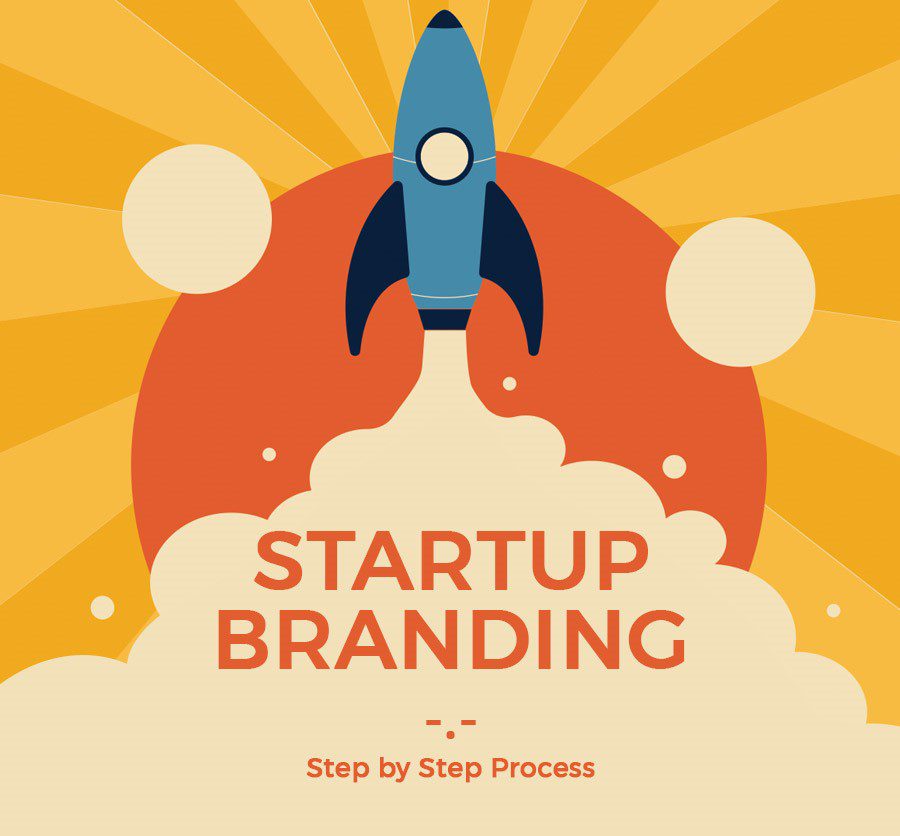Startup Branding: Step by Step Process
In the initial stages of startup progression, most entrepreneurs are not focused on the product itself but relatively with methods to find the target audience, satisfy their needs, and make the process better or fast.
Another challenge that most of them face is to cope up with the competition. If you’re a beginner, there might be situations where you don’t get enough time or money at the same time and can manage the conditions. Therefore, it is essential to find the product-market relevant before the time runs out.
Many successful business giants have discussed why startup branding is essential and how it can make their business successful. However, designing your startup branding strategy is not a challenging task; you can approach a good brand design agency that makes your brand reach the next level.
The CEO of Amazon, Jeff Bezos, has mentioned in one of his discussions: “Your brand is something that other people say about you while you’re not in their space.”
 What is Startup Branding?
What is Startup Branding?
In earlier times, the word ‘logo’ symbolized the ‘brand’. But, in the current situation, a logo is solely part of a brand; however, the reality is that most novice entrepreneurs seem to make the contrast and realize this – majorly new startups.
The primary reason why people invest in branding, even startups, is that in the long term, you won’t be able to promote a product or service effectively if you don’t establish a solid brand identity system.
Good branding is the heart of any organization, whether an enormous giant or just a startup. Organizations like Ola, CRED, Zomato didn’t just impact the market because of their great products or service. Still, they achieve in presenting themselves to the right audience at the appropriate times. While we research in the market, we’ll be able to understand the result with evidence.

Startup Branding Process
As we discussed, branding is more than just a name and logo. There are many elements for a startup company to direct all at once. The entanglement of branding is adequate to make any startups that are running for the hills. Even if you need to create it, then keep the three C’s in mind while you follow these steps:
1. Identify the market for your Startup:
It’s impractical to brand any organization without any conditions efficiently. In other words, you need to perceive who your target customers are, where you’re placed in the market, and how to make yourself different from competitors.
In general, your niche will be manifest and based on the product you’ve produced. Moreover, the best products are always a reaction to an existing problem. Once you’ve got a clear mindset, make specific demographic and psychological factors.
The more details you collect, the more you’ll be able to customize a brand commencement that conveys directly to the individuals most likely to invest in your organization.
2. Study your Competitors:
Most of the great startups in the world are facing the most challenging situations today. Many brands have already commenced playing in such a phase, which means that you must work extra hard to take a position on the board.
Analyzing who your competitors are and what they are offering can aid in making your products or service stand out. It will enable you to set your costs competitively and help you to counter rival marketing campaigns with your own strategies.
Moreover, studying your competitors will guide you to regulate where there’s a gap and what you exactly require to brand yourself efficiently.
3. Decide On A Company Name
The top essential factors to contemplate when determining a name for your company are how easy it is to pronounce or remember if it has a space for expansion, is it available on the trademark and how it suits your brand voice.
It’s always preferable to pick a name that is simple to pronounce and remember. Many stories of prominent giant founders chose names for their organization and struggled to get attention because their consumers didn’t recall how to spell. It also ignored its result on search engine optimization.
4. Write Your Mission Statement
A mission statement is a primary element for structuring internal culture and operating your future marketing materials. Possessing your brand voice in a place makes the process of approaching with the perfect mission statement a lot simpler.
Every process you create for your company should hitch into your mission statement and interface your brand voice. Following are some of the examples of the world’s topmost mission statements used to construct powerful brands.
Facebook – “To offer people the power to develop community and guide the world closer together.”
Google – “To classify the world’s details and make it globally attainable also useful.”
5. Find Your Colors
It’s always a tendency to choose your favourite colors as your primary brand color, but in reality, it’s not the most rational thing to do. It’s always preferable to create a mood board with a reason.
Your mood board should indicate what colors need to add to your palette. If you show that you have a similar color, blue, then it is logical for that shade of blue to be included in your color palette.
6. Design Your Logo
Once you are done with the primary process, it’s time to design your logo. But we know it’s challenging if you don’t have much knowledge in graphic design.
However, you can get quality logo designs done from freelancers to a branding agency. Still, you must communicate them with everything you’ve worked on up and convey the right message so that you’ll get quality designs from them.
Your logo should convey your brand voice keywords and combine well with the rest of your mood board.
7. Choose Your Typography
While you research typography, you can find thousands of fonts to decide, but you can’t depend on a gut feeling. Making the right choice depends on context, function, and other significant factors.
It’s always important to think about your personality and your brand voice. If your brand voice is favourable, you might anticipate rounded fonts that are simple to read. Suppose if your brand voice is confident, you might look for concentrated fonts.
8. Differentiate Yourself
It doesn’t matter how improbable your product, perhaps there’s always a better chance that your substituent is already doing similar kinds of products. Therefore, the best way to survive in this crowd is to associate where your products project.
At times, the thing that actually makes you exceptional will end up in doing nothing with the product. After all, if you observe the marketing mix, there’s more to your company than the items you sell.
9. Be Consistent
Always remember, your brand doesn’t cease developing at any stage. Successfully, you’ve set a stand for success by generating your style guide. The next time you require a portfolio designed for an event, you can send that guide to them to ensure your brand sticks solid through every project.
Each aspect that involves your company should fit accurately into your style guide as an example of your design elements.
Conclusion
Developing a brand isn’t a project; thus, you can’t manage it like a solid one. We can symbolize it with a similarity of a child who is growing as a person. You might invest your initial five years in figuring out who you are and convert your brand elements as you proceed.
Your brand will develop over time, build more attributes, and might even end up being the conflict with what it was when it first commenced out.
Thus, I hope now you get an idea about what all process needs to be carrying out while developing your startup brand. If you have any enquiries, you can connect us; we DesignerPeople will make your startup brand a successful venture with the best branding input.
Must Read:-
- Top 10 richest actors in the world 2021
- Business vs Job: Which is Better
- Top 10 series on Netflix 2021, don’t miss these must-watch series
- Upcoming List of Top Indian Web Series of 2021
- Top 10 richest player of the world 2021
- Top 10 highest paid CEO in the World
- Top 10 richest person of India
- Top 10 Highest Paid CEOs of India
- The Success Story of Steve Jobs
- Top 10 Business Magazine In India
- Top 10 Business Newspaper In India
- Top 10 richest billionaires in the world 2021


